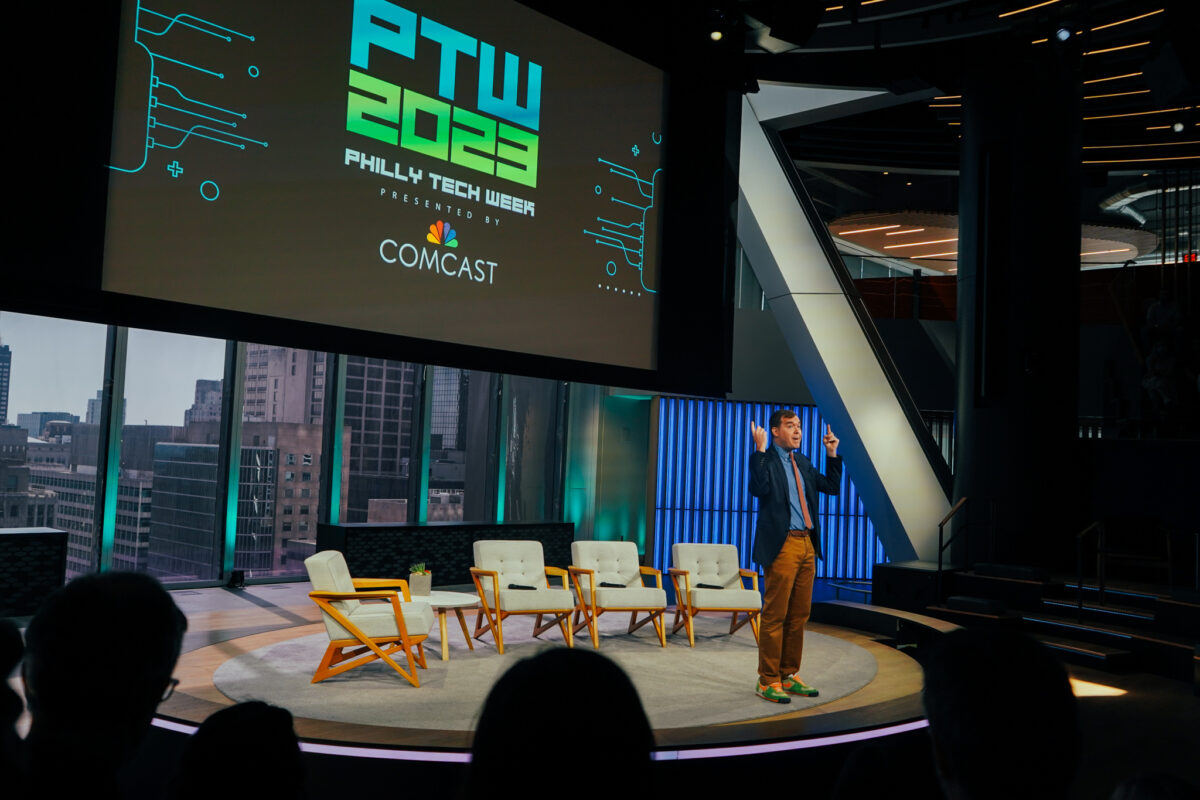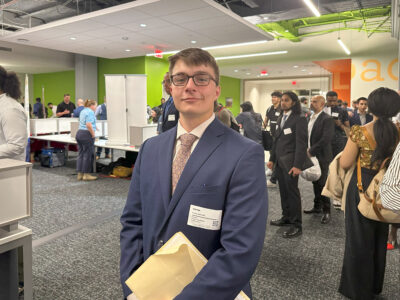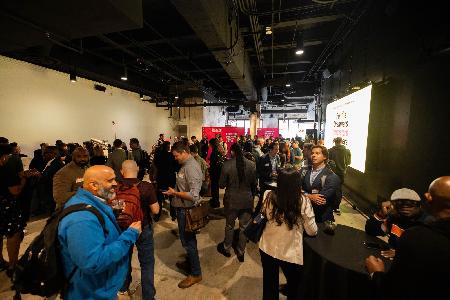It’s August 1944 and John von Neumann is panicking.
Von Neumann is one of the world’s greatest living thinkers. He’s waiting in Aberdeen, Maryland, for a train on his way home to Princeton. A young mathematician named Herman Goldstine recognizes von Neumann, who is lost in thought. The outcome of the Second World War remains in question, and von Nuemann is part of a group of scientists who are supposed to do something about it.
The breakthrough technology of the moment is computing — which can be used to make artillery more accurate. Von Neumann believes it will change the outcome of the largest war in human history. And he fears the good guys are losing. Goldstine knows something von Neumann doesn’t, and a chance encounter on a train between Baltimore and Philadelphia shaped the tech economies we live in today.
Their connection is documented in “The Dream Machine”, a 2001 book by journalist M. Mitchell Waldrop charting the rise of modern computing. It also served as an illustration of big trends that I shared in my keynote at the Technical.ly Builders Conference, which we hosted last month. Five hundred people from more than 15 states joined us. Watch the keynote address here.
Over the last three weeks, we’ve shared those three trends that relate to your work:
- Entrepreneurship is booming; It wasn’t always. We can’t waste this moment.
- Demography is destiny. This will transform who is working and where.
- Emerging technologies bring paradigm shifts. The digital transformation era is done. The Age of AI is here. It will change all of us.
As highlighted, each of these trends mean something for both company builders and ecosystem builders — those of who gave name to our conference. Consider each of the three.
First, the business incorporation boom includes both full-time endeavors and expanding gig work. Half of young workers now say they do some freelance work, according to past Technical.ly reporting. Hiring managers will compete for workers with entrepreneurship — and that’s a good thing. Just last week, a US labor official said that noncompete agreements violate US labor law in many cases, and that could result in more employees leaving to start their own companies. Let them go and welcome them back. We need more new companies to grow and hire.
Next, the American labor force is getting older and shifting geographically to the South and Southwest. Employers should hire abroad, and demand expanded visa programs. Continue this country’s immigration-friendly tradition. Those in the US Northeast and Midwest especially ought to court immigrants and retain the big Millennial generation. All should take seriously fun and dynamic tech and entrepreneurship communities. Parties matter.
Last, the digital transformation era is winding down. The Age of AI is a paradigm shift, and that’s not something I said about 3D printing, Blockchain, augmented reality or VR — though they all remain impressive technologies. The urgency of retooling our workforce grows. Hiring managers must recognize the HR tech arms race; one-click apply ruined hiring. Instead, like those promoting their cities, your best asset isn’t more tech but your people. Tell their stories.
When so much is automated, telling a genuine story about people is the best way to command attention and trust. Which brings us back to August 1944.
John von Neumann was on that train platform after a big meeting on the race to create the world’s first supercomputer. Like any early-stage investor, the US military made several bets, but none looked promising. The project at Harvard was too limited; the one at Bell Labs was too convoluted and Columbia’s was more talk than substance — oh, New York.
That young mathematician Herman Goldstine was part of the Moore College-University of Pennsylvania team developing the ENIAC — another of the computing bets. It had become a punchline among early researchers. Its budget was too bloated and founder John Mauchly’s vision for vacuum tube computing was considered far-fetched. It was going to be a $10 million paperweight.
But Goldstine was a believer. Von Neumann was desperate. He agreed to visit and was impressed enough to throw his considerable reputation behind the project. It worked. A few months later, the ENIAC was unveiled — the first time the word “computer” was used to describe a machine.
The computer scientists didn’t win the Second World War (physicists in the desert did). But the ENIAC, thanks to the men and women behind it, set the foundation for the Digital Age that followed.
Serendipity changes the course of humanity. People density drives serendipity — train platforms and day-long conferences being just two examples. After the dust settles on the COVID-19 pandemic, the big question isn’t about what we build, but where we build it.

Written by Technically Media CEO Chris Wink, Technical.ly’s Culture Builder newsletter features tips on growing powerful teams and dynamic workplaces. Below is the latest edition we published. Sign up to get the next one.
Before you go...
Please consider supporting Technical.ly to keep our independent journalism strong. Unlike most business-focused media outlets, we don’t have a paywall. Instead, we count on your personal and organizational support.
Join our growing Slack community
Join 5,000 tech professionals and entrepreneurs in our community Slack today!






